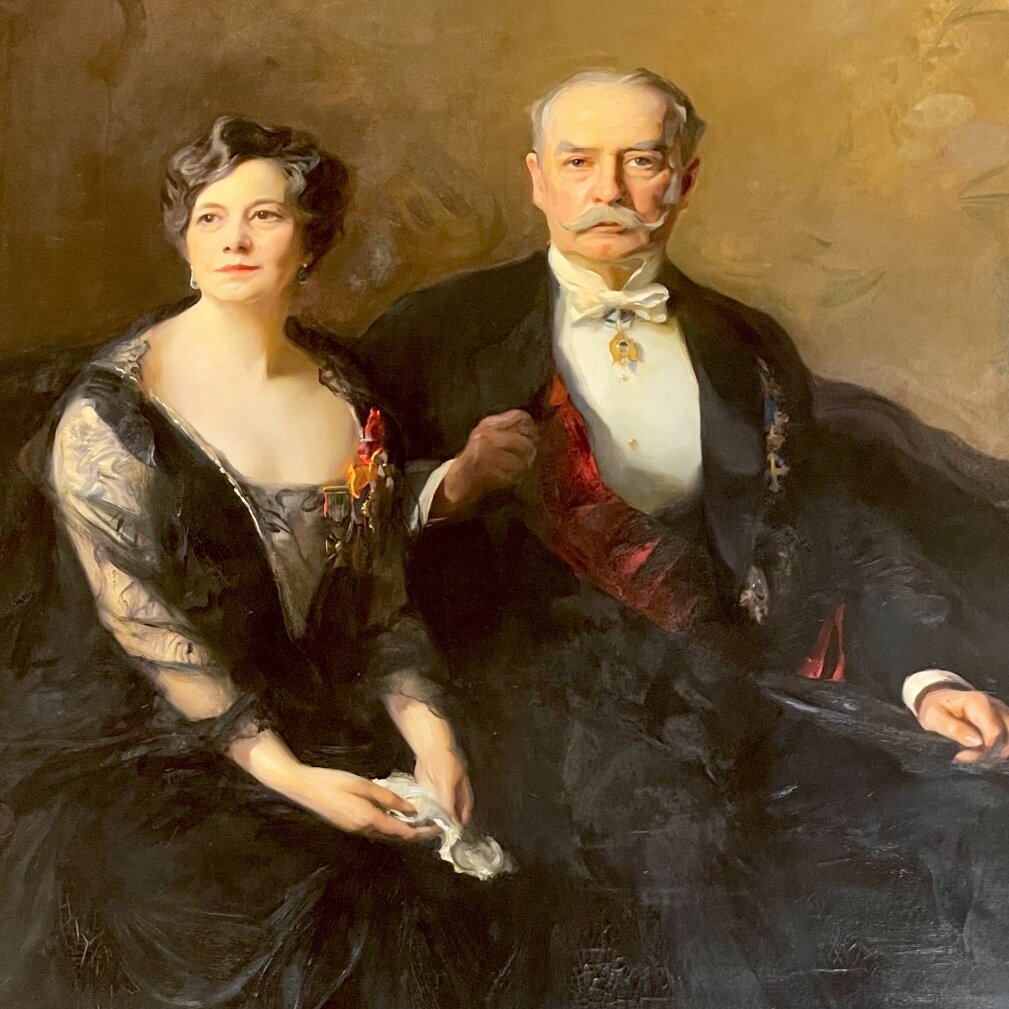Larz and Isabel Anderson’s Garden Legacy
In 1897 Miss Isabel Weld Perkins married diplomat Larz Anderson, whose parents had a beautiful home on 16th Street in Washington DC. In 1899, Larz and Isabel purchased the 64 acre estate of her cousin, William Weld, in Brookline, Massachusetts, overlooking downtown Boston. In 1901, Isabel hired the famous architect Charles Adams Platt to design a garden for the estate, which she named ‘Weld’ after her grandfather. Construction began at the same time as Anderson House on Massachusetts Avenue was taking shape. This garden was a sensation and soon became one of the most published and influential landscapes of the early 20th century—the formal gardens by which all others would be judged.
Platt’s commission for the Weld garden was unusual as it involved an existing house. In most of his work, Platt designed both house and garden, with perfect integration between outdoors and indoors. The Anderson garden at Weld was further unusual in that it was not visible from the house, but rather accessed across the bowling green that fronted the house, and thence by paths that approached the garden from the side. The main garden was built on a terrace pushed out from the hillside, and featured a center panel of grass, flanked by parterres, and surrounded by terraces that effected changes in levels and vistas. A king’s ransom in antique Italian sarcophagi, urns and columns ornamented the garden. Accompanying the main garden were the usual complement of cutting garden, a rock garden, greenhouses, nursery gardens, wild gardens, and an allee. At the base of the hill lay a private polo field, and between it and the main gate was an ornamental lake, with bridges and a domed temple at its head. In a generous civic gesture, the high stucco wall that shielded the estate from the road was pierced with an elegant wrought iron screen to give passers by a vista of this Arcadian scene.
Garden of Weld in Brookline, Massachusetts
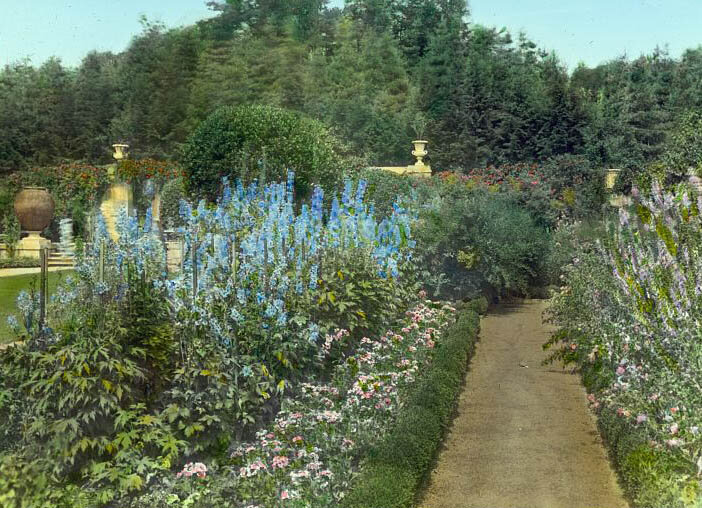
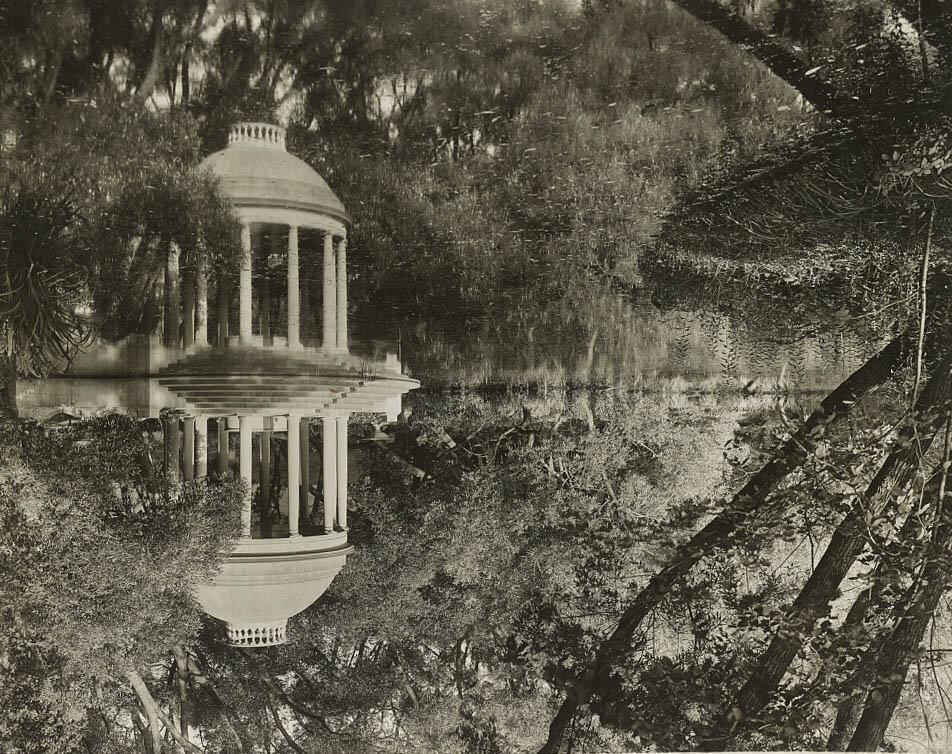
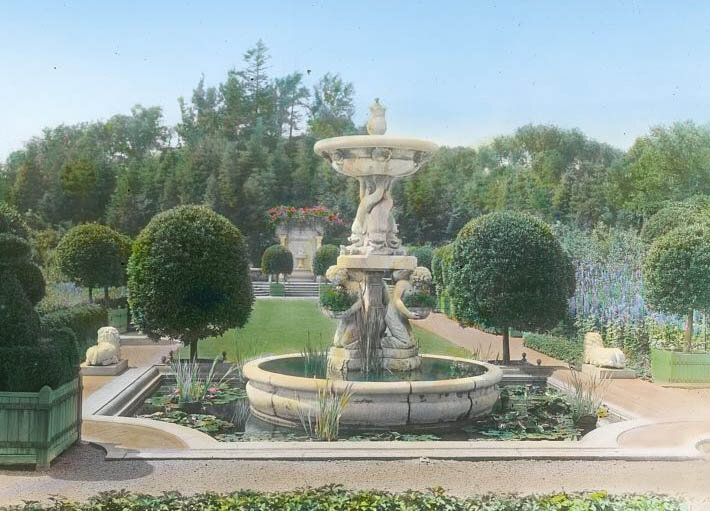
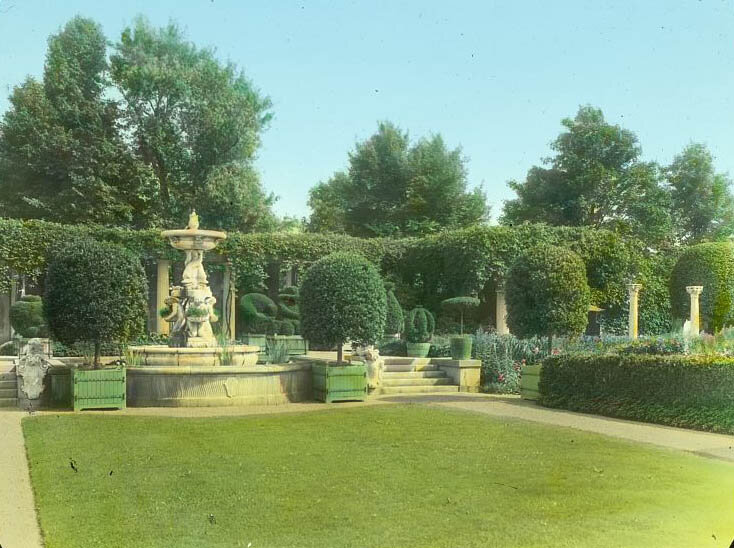
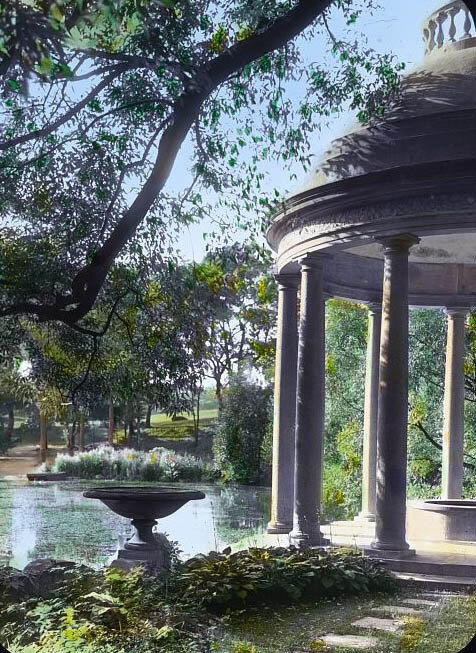
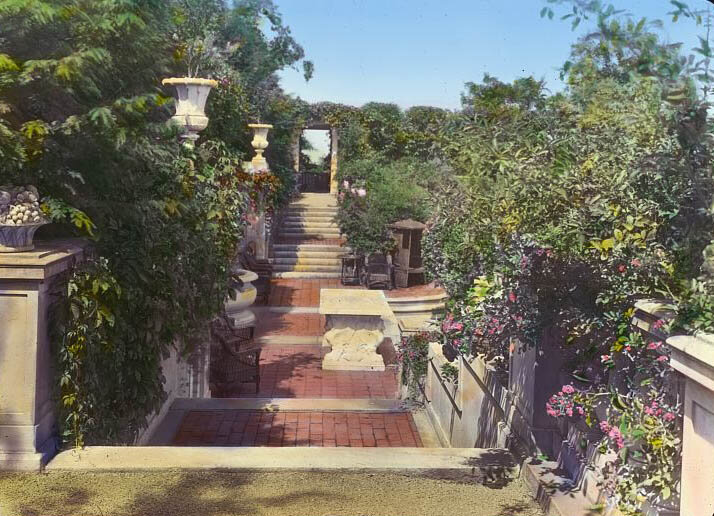
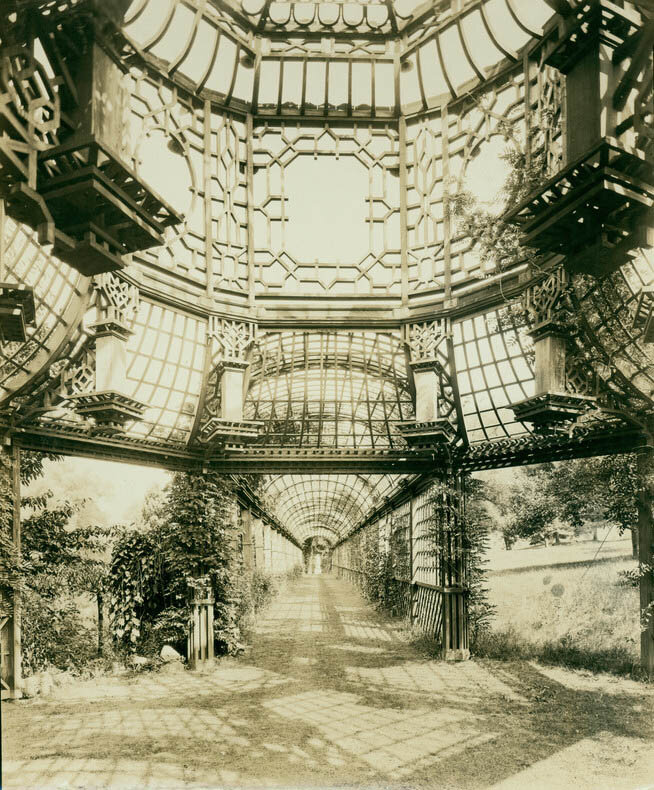
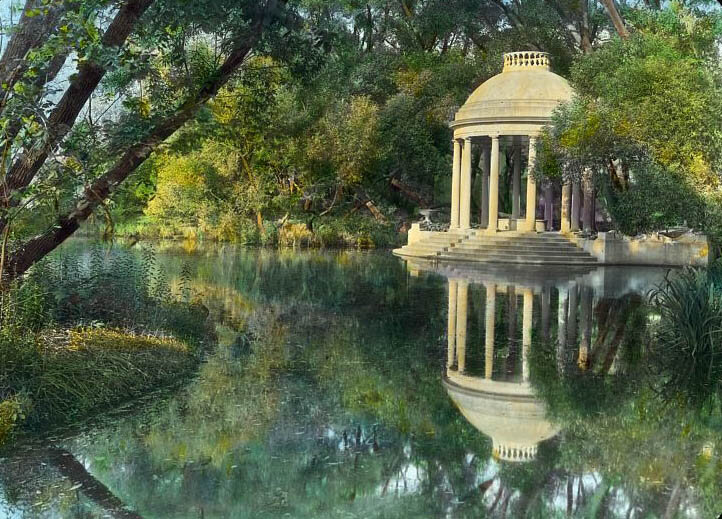
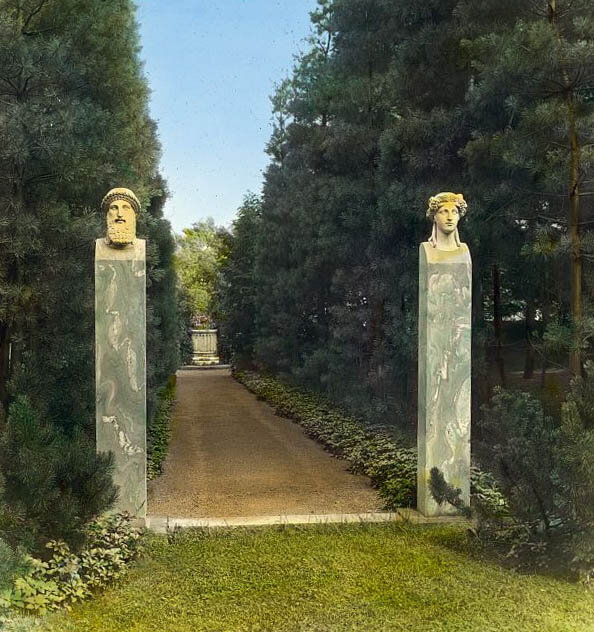
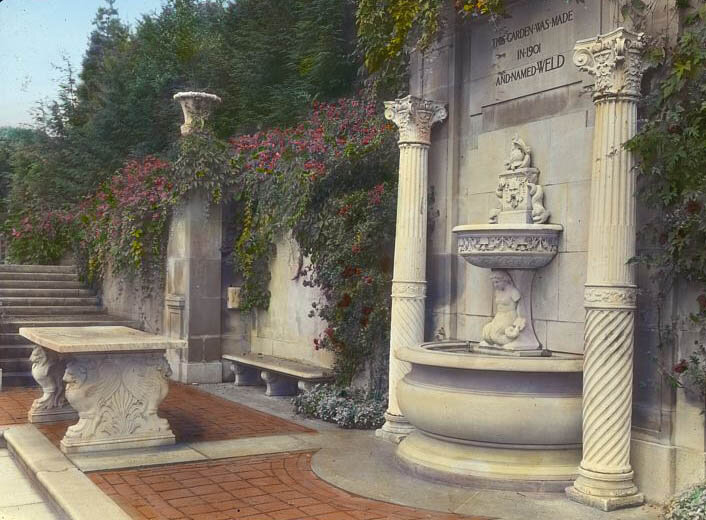
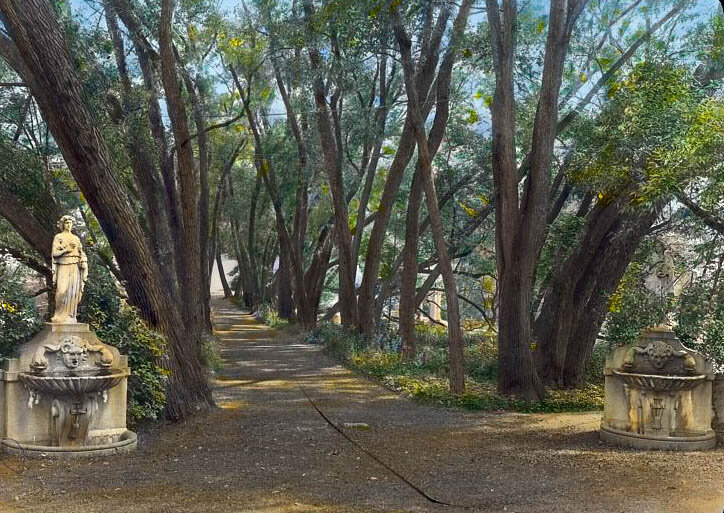
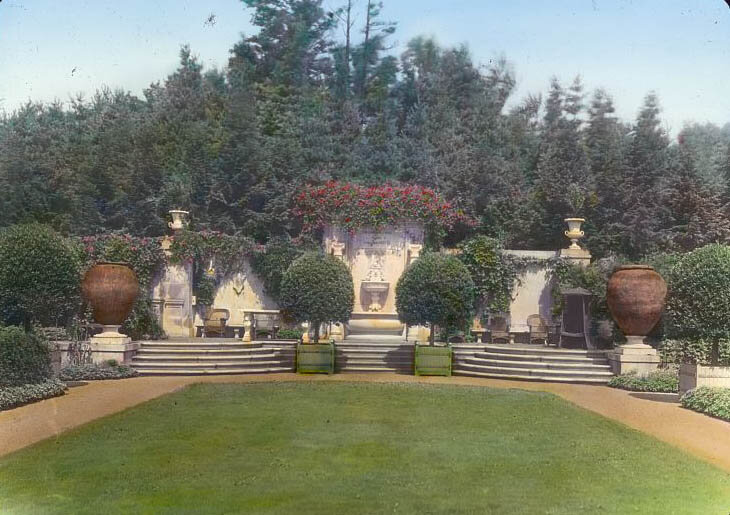
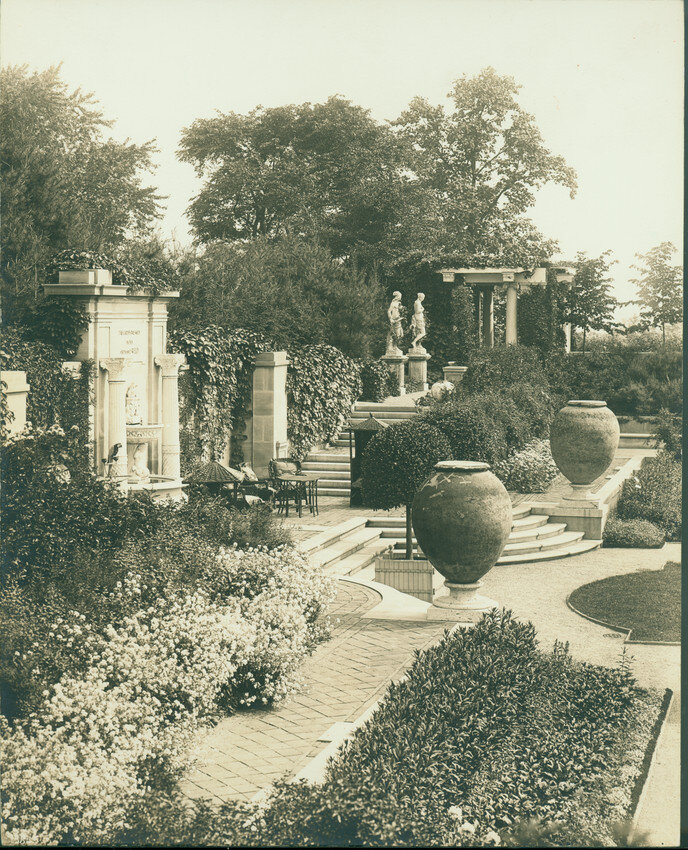
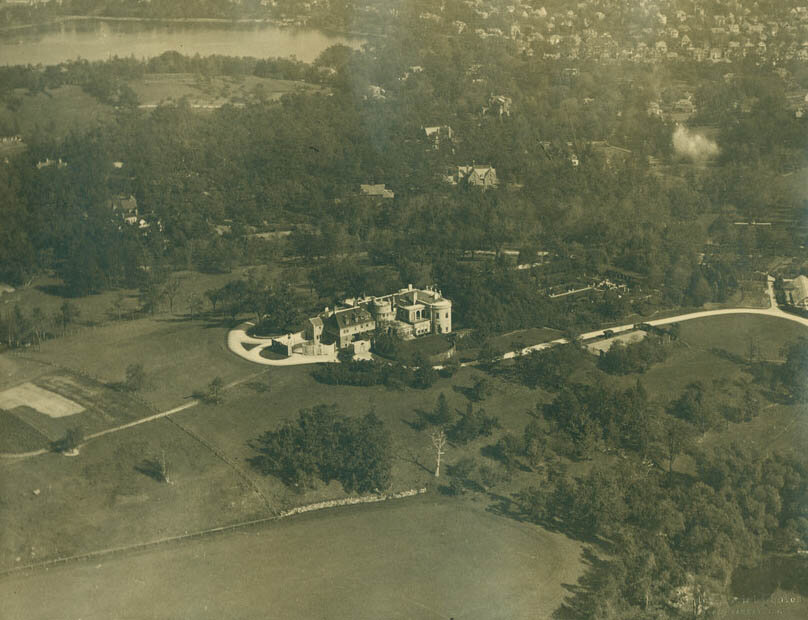
The Andersons then turned their eye briefly toward Washington, where they intended to spend half the year for Mr. Anderson’s diplomatic career. They hired Boston architects Arthur Little and Herbert Browne to design a large townhouse based on early 18th century London models. As with many of Browne’s works, it displayed the same bold juxtapositions of scale and liberty with details that characterized his style.
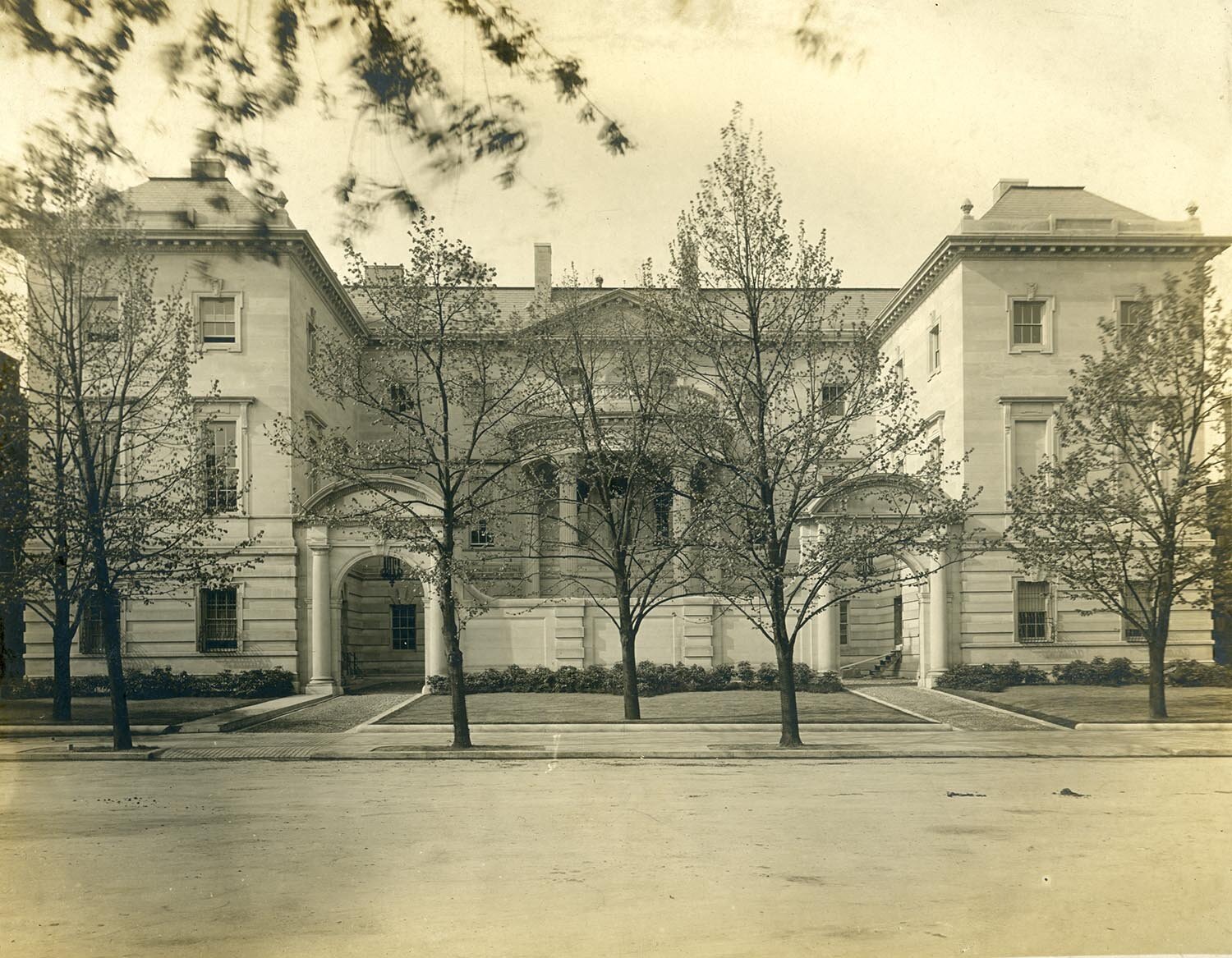
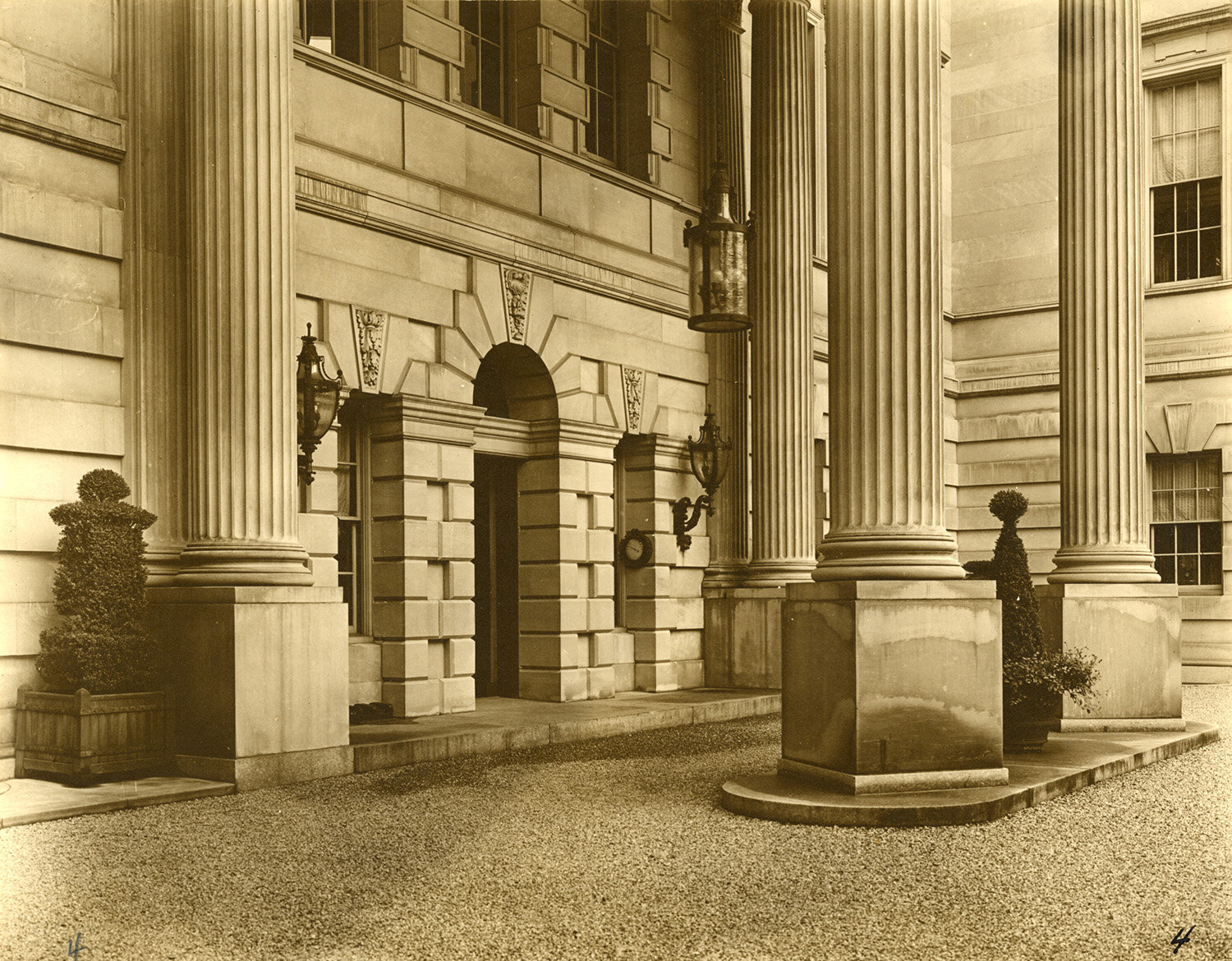
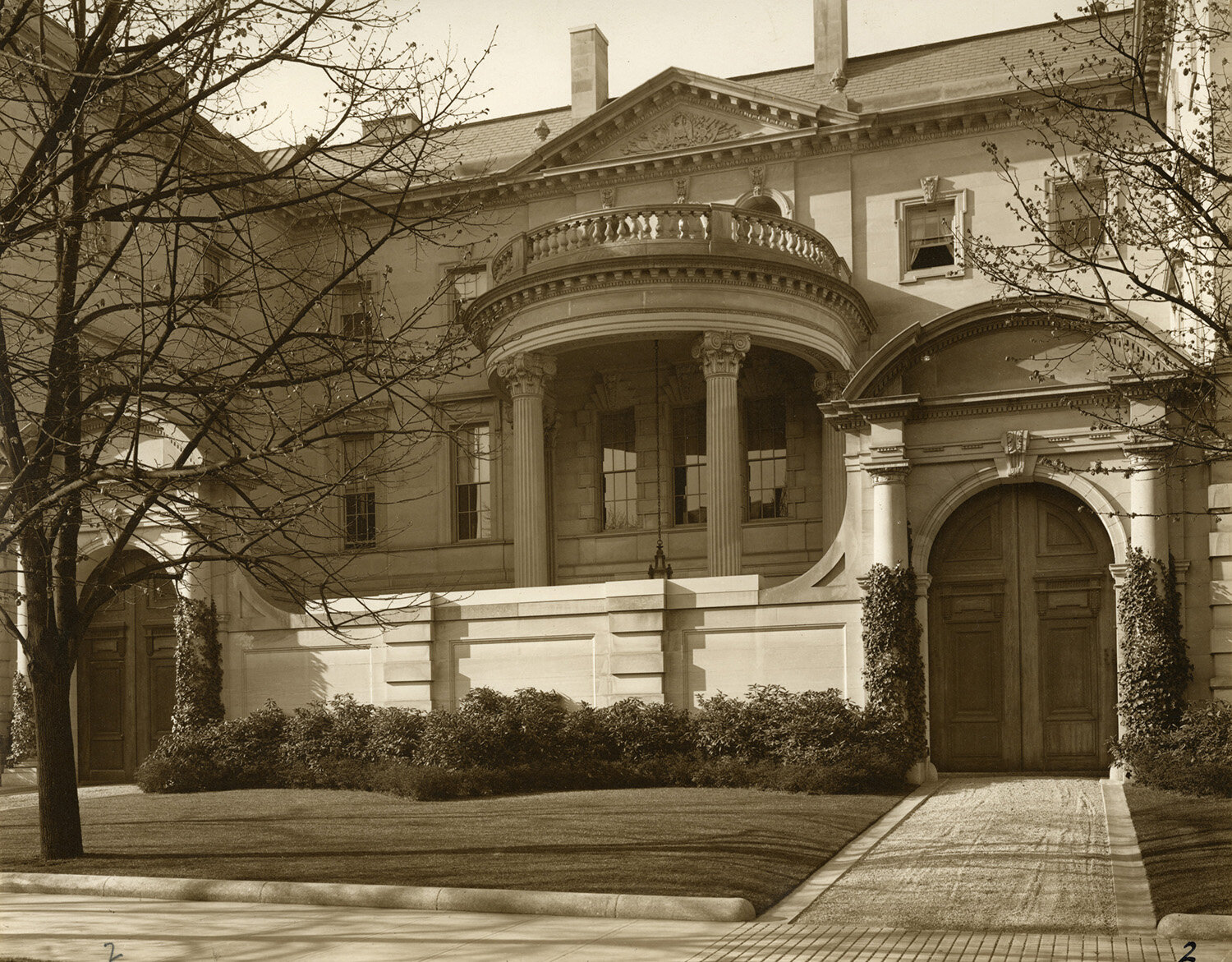
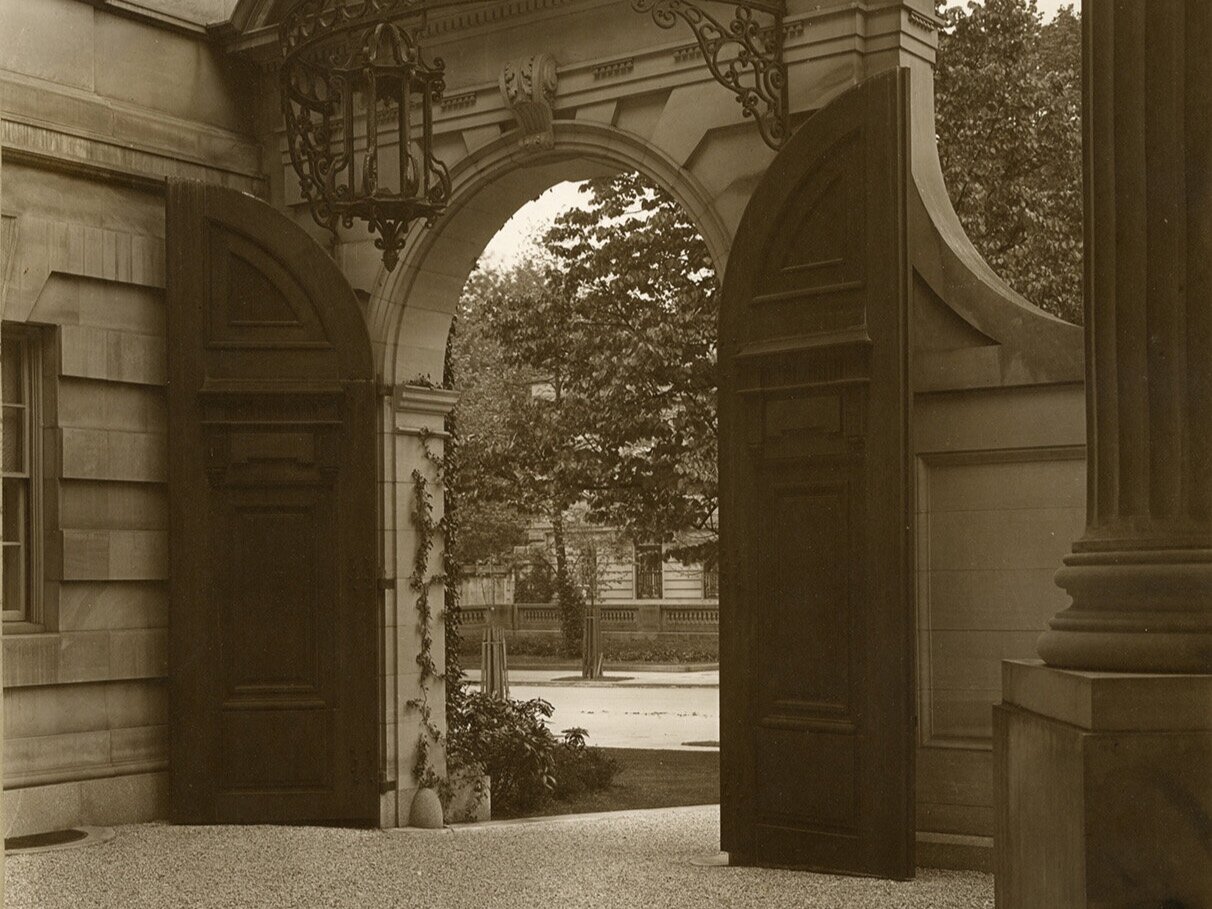
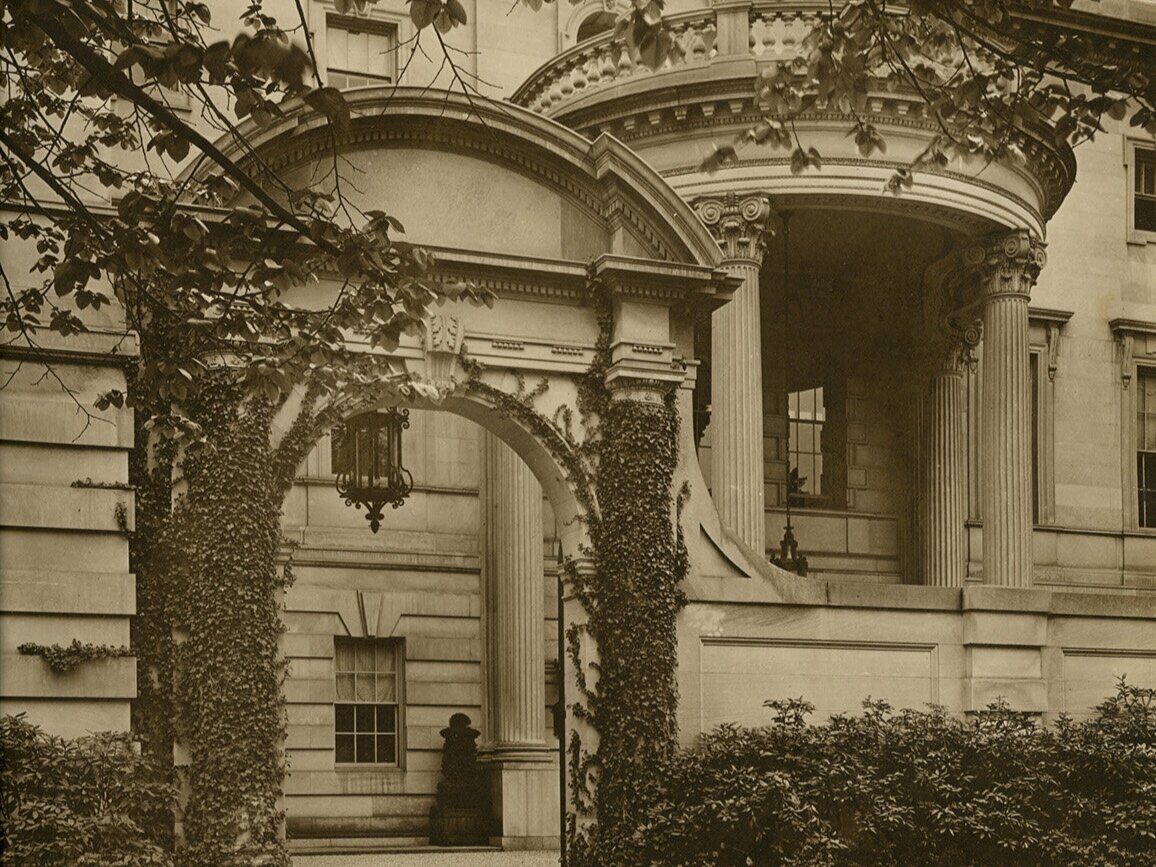
Larz Anderson visited Japan as a youth, and near the end of his career, in 1912 was appointed US Ambassador to Japan. Asian culture and Japanese art especially, had a profound effect on the Andersons, and their garden at Weld was soon to receive a layer of Japanese art and gardening to add to its Beaux Arts splendors. A large bronze eagle that had been in their garden in Tokyo was installed in a new Japanese garden built adjacent to the cutting gardens. A room in the house was sheathed in simple Japanese style (although retaining its baroque mantel), and a superb collection of Bonsai was housed in one of the conservatories (this collection is now at the Arnold Arboretum in neighboring Jamaica Plain).
The Andersons had a keen sense of their important place in history and knew that they could benefit others by leaving this as their legacy. Upon her death in 1948, Isabel left the entire estate and gardens to the town of Brookline for the enjoyment of the public. Neglected, the house burned in the 1950s and the garden was mostly demolished for an ice rink for public use, though their magnificent carriage house is now the Larz Anderson Auto Museum. The entire property is still open for the public to enjoy, but its crown jewel, the famed garden lives only as a memory.
Bibliography: Text and photos courtesy of Anderson House and The Society of the Cincinnati
